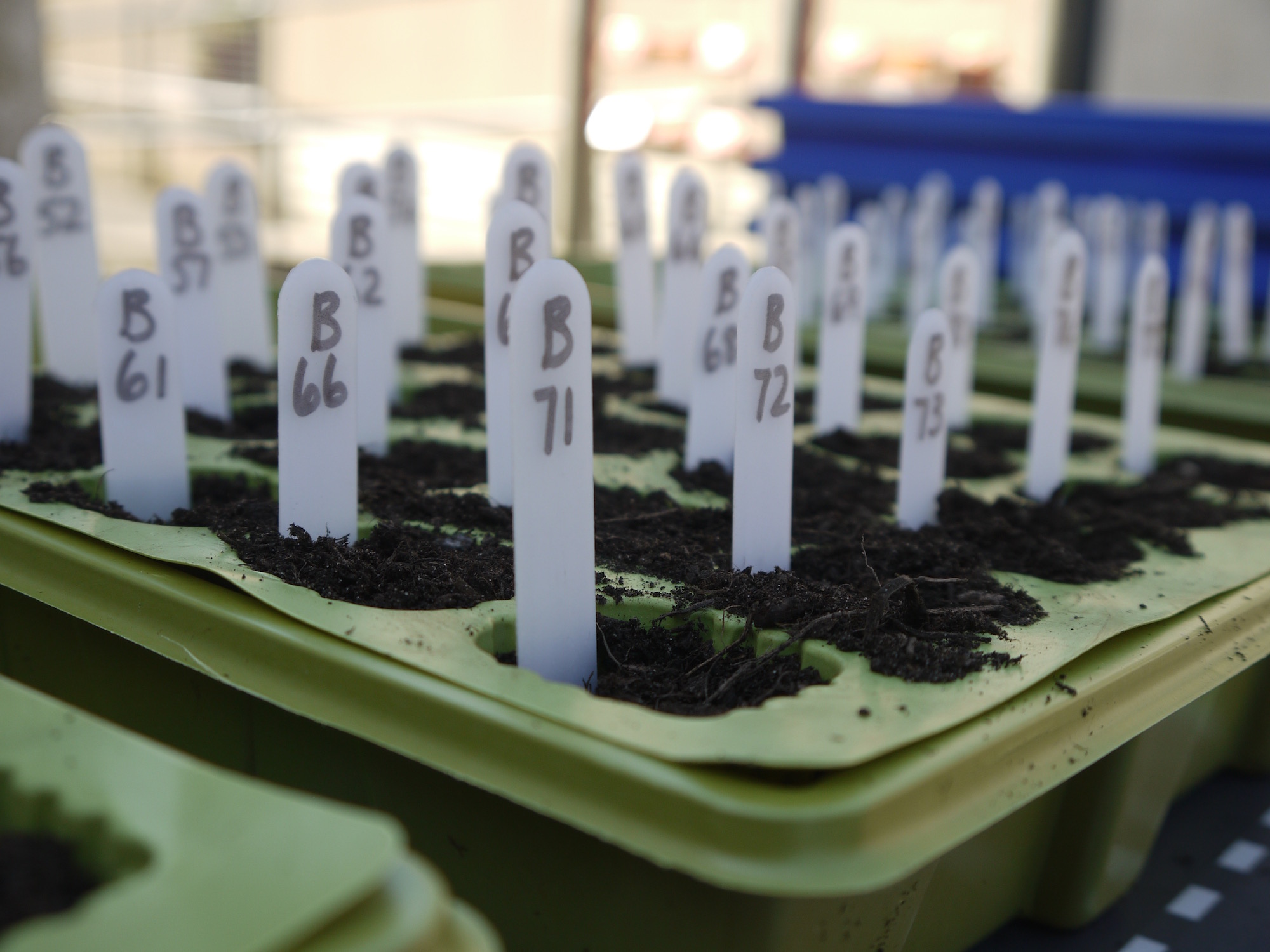[av_textblock size=” font_color=” color=”]
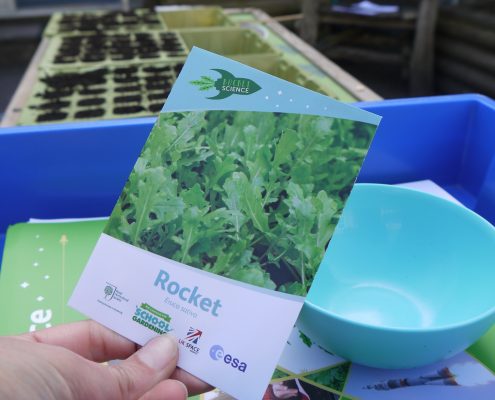
I was just a little bit excited (*practically rocketing along the country roads*) to be invited along to my kids’ lovely local village school, Meysey Hampton C of E Primary School, to help sew their space rocket seeds yesterday. If you haven’t heard about this project, here’s what it’s all about…
A few months ago in December, two kilograms of rocket seeds were sent up to the International Space Station as part of British ESA astronaut Tim Peake’s six-month Principia mission. After several months on board, the seeds are now back in the UK and have been packaged up and sent to over 8,600 schools and educational groups across the country.
Each school has received a red packet of 100 seeds and a blue packet of 100 seeds. One packet of seeds has spent time in space with Tim on the International Space Station, orbiting the Earth at 17,000 mph and the other packet has remained here on Earth, but we’re not allowed to know which is which until after the experiment. The aim of the project is to enthuse young people about science and horticulture and provide the European Space Agency with key insights into some of the challenges of growing food in space. This awe-inspiring project is now among the biggest mass science experiments ever conducted in UK schools, which is why I was so keen to be a part of it!
On arriving at school I found our ever-enthusiastic Head of Science, Jo, and our wonderful gardening volunteer, Mary, already busily cutting up individual labels for all 200 seeds – that’s a lot of snipping. We had been given rigorous instructions on how to ensure that the planting was done correctly. Even the placement of the seed trays on the windowsill had to be randomised – there were instructions for everything! It took us a little while to get everything set up correctly, but once we were prepared, each child came along and very carefully planted one of the teeny, tiny, precious seeds. This process was a little hit and miss, as it was quite tricky for the children to pick up just one rocket seed (measuring about a millimetre across)!
I was helping with the planting of the blue packet of seeds, so I’m obviously hoping that these were the ones that had been hurtling around the Earth, but of course we won’t know until the results are out. It was astounding for us all to think about how this small primary school in a sleepy village in the middle of the Cotswolds was taking part in a huge, collaborative, real-life science experiment using seeds that had been all the way into space and back!
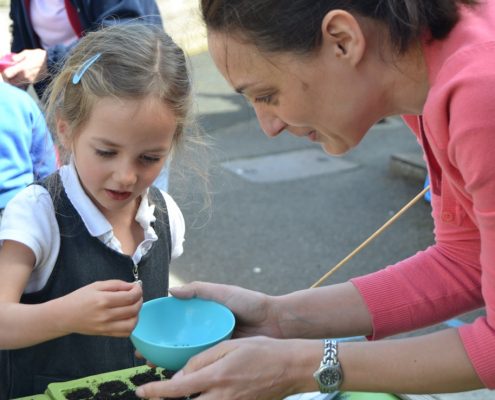
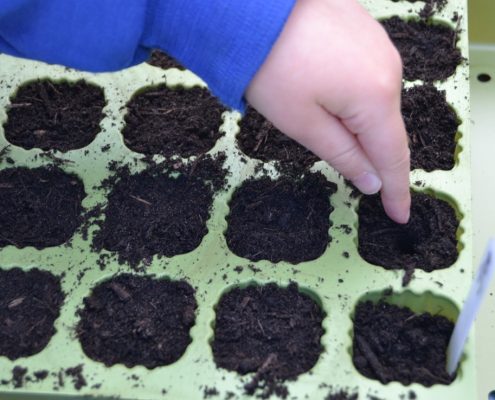
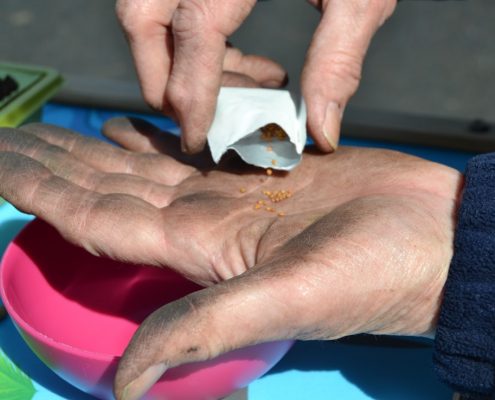
Here are a few of the excellent questions from the children:
“Why can’t we know which packet of seeds went into space?”
This is how blind experiments are done; it’s a way of making sure that the experiment is perfectly fair. If, for example, we knew in advance that the blue packet of seeds had been in space, we might have treated these seeds with extra care and attention. This could then have led to a better growth rate of this batch, meaning that the experiment would no longer be fair and we wouldn’t be able to tell if the seeds from the blue packet grew better from going into space or from being handled with extra care. That’s why it’s important that this should be a blind experiment.
“Does it matter how deep the hole is when I plant the seed?”
We tried to make our holes as uniform as we could, but since it’s completely random between the two sets of trays – then it doesn’t actually matter if some seeds are planted deeper than others, as there will be roughly the same amount of random depth between the two sets of seeds.
“Do the seeds that have been into space look any different?”
We had a good look and some children thought that one set of seeds looked a slightly different colour to the other, but we concluded that this was probably because they were in differently coloured bowls and the colour was being reflected from the bowl.
Speaking from 400 km above the surface of the Earth, Tim Peake sent this inspirational message of good luck to all young participants:
“This is a really exciting week for the hundreds of thousands of young people across the country who will begin their Rocket Science experiments. I’d like to wish everyone taking part the best of luck with their investigations and I look forward to seeing some of the results.
It’s possible that among those pupils taking part in the project are the young people who will help mankind reach the next big milestones in space exploration for the benefit of people on Earth. I hope the RHS Campaign for School Gardening’s Rocket Science experiment will spark curiosity and wonder amongst young people who may become the next generation of horticultural scientists.”
Over the coming days and weeks the children will record how many seeds from each set germinate and they will need to turn the trays around every couple of days and record the height of the seedlings as they grow. We’re waiting with baited breath for the first seedlings to show themselves – will it be a red or a blue seed to sprout first we wonder? My money is on the blues, but then I’m biased 😉
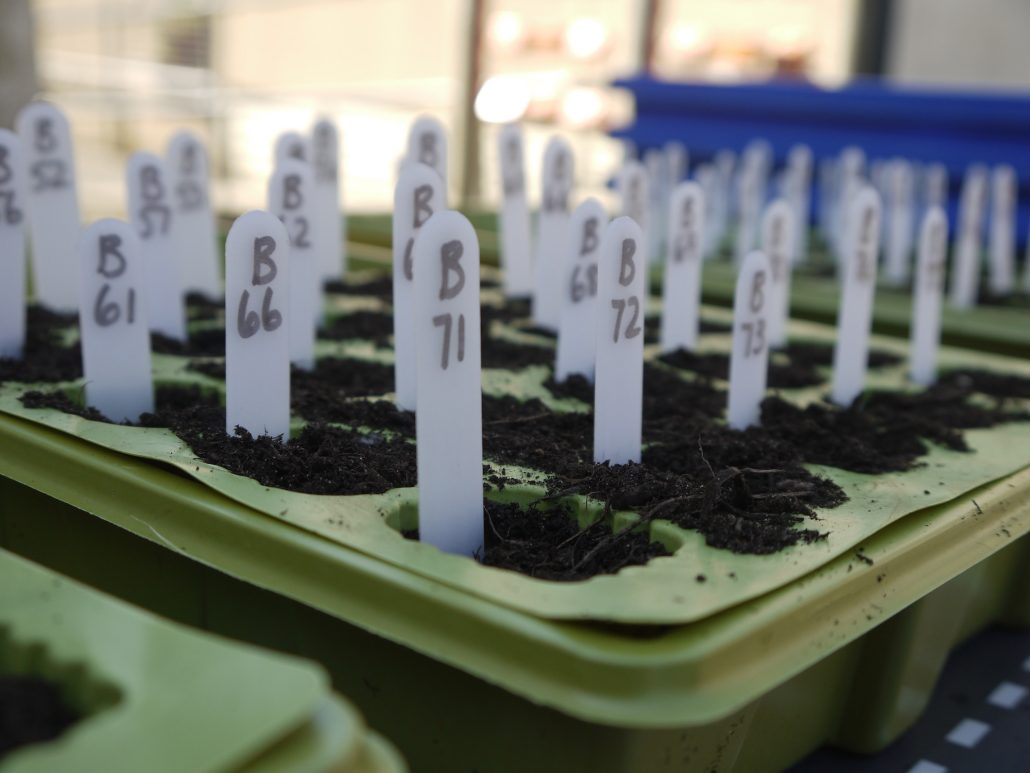
Is your child’s school taking part in the rocket seed experiment? Has the project got your child fired up about science or horticulture? Let us know in the comments below…
[/av_textblock]

